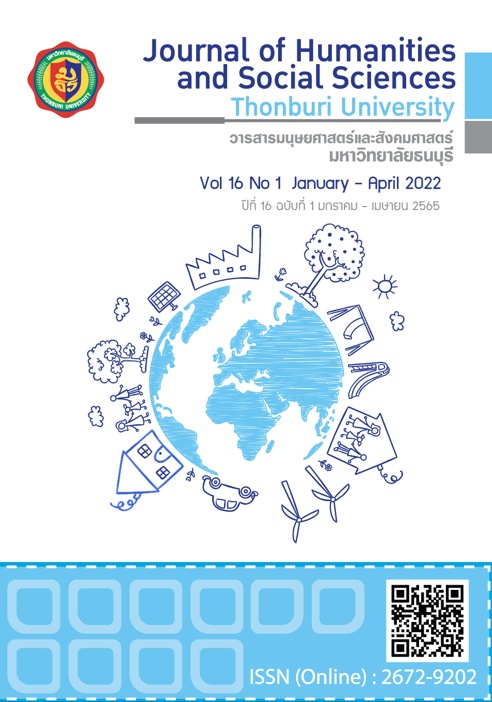Development of a Peer-to-Peer Mind Map Learning Activity for a Third-year Undergraduate Course in Quantitative Analysis for Decision Making in Business at Prince of Songkla University
Keywords:
mind map, peer-to-peer, effectiveness index E1/E2Abstract
This research study was a development of a mind-mapping learning activity, supplemented with a peer-to-peer technique. The developed activity was for a course called quantitative analysis for effective business decision, while the development goal was to achieve a ratio (E1/E2) of 80/80 for the developed activity. In addition, the study included determining the learning activity’s effectiveness index and surveying the students’ attitude towards the arrangement of teaching and learning of this course. The sample group was 18 3rd-year students at Songklanagarinda University, Pattani Campus, purposedly selected from a population of 32. The determination of learning achievement was based on a one-group, pre-test, post-test experimental design, statistically analyzed with a paired-sample T Test. The results of this study were found as follows: The outcomes of the first objective were the following: E1 was 81.63, higher than the standard criterion of 80; E2 was 82.24, also higher than the standard criterion; the average student post-test score of 30.21 (S.D.=4.70) was significantly higher than the pre-test score of 23.93 (S.D.=6.25). The outcome of the second objective was a good efficacy index of 0.63. Finally, the outcome of the third objective was that the students had an excellent-level attitude toward the course.
References
Wuthisatian, R., & Thanetsunthorn, N. (2019). Teaching macroeconomics with data: Materials for enhancing students’ quantitative skills. International Review of Economics Education, 30.
Srisampan, K., Sirisakulpaisan, B., & Foneboreman, S. (2017). Peer to peer learning in demonstration activity of child delivery process. Health Science Research Journal. 11(2):138-146.
Wongpattanakijmanop, k. (2019). Using mind-mapping technique and Plickers computer program to supplement the teaching and learning activities of a basic English course for 1st-year cadet. Class report. Military Prep School.
Komolmak, N. (2017). Learning outcomes of a peer-to-peer financial management course for 2nd-year high school students at Samsen College. (Master of EducationThesis, North Bangkok University).
Promwong, C. (2013). Media performance testing or teaching, Silpakorn Education Research Journal 5(1):7-20.
Bootdeewong, P., Aneksook, S., & Ngammeerit, N. (2019). Investigation into and development of an in-class pairing, peer to peer technique to improve learning achievement in mathematics of 11th-grade students in Princess Chulabhorn Science High School, Thailand. e-Journal of Education Studies, Burapha University. 1(3). September 2019.
Parndarong, B. (2017). Development of a peer-to-peer English for professional communication course at Lampang Technical College. (Master of EducationThesis, Chiangmai University).
Tanma, T. (2018). Learning outcomes of a peer-to-peer mixed-media course on fraction for 4th to 6th-year primary school students. 18th national Graduate studies of Northern Rajabhat University Network conference at Lampang RatchapatConference: Research and Development Department and Office of Graduate Study Administration, Lampang Ratchapat University.
Kaewmani, W. (2018). Development of creative English writing ability of 6th-grade students with mind mapping. Master’s degree dissertation, Faculty of Education, (Master of EducationThesis, Dhurakij Pundit University).
Buhmann, Y. S., & Kingsbury, M., (2015). A standardised, holistic framework for concept-map analysis combining topological attributes and global morphologies, Knowledge Management & E-Learning.7(1).
Downloads
Published
How to Cite
Issue
Section
License
Copyright (c) 2021 มหาวิทยาลัยสงขลานครินทร์ ปัตตานี

This work is licensed under a Creative Commons Attribution-NonCommercial-NoDerivatives 4.0 International License.
ผลงานที่ปรากฎในวารสารฉบับนี้เป็นลิขสิทธิ์เฉพาะส่วนบุคคลของผู้เขียนซึ่งต้องรับผิดชอบต่อผลทาง กฎหมายที่อาจเกิดขึ้นได้และไม่มีผลต่อกองบรรณาธิการ






